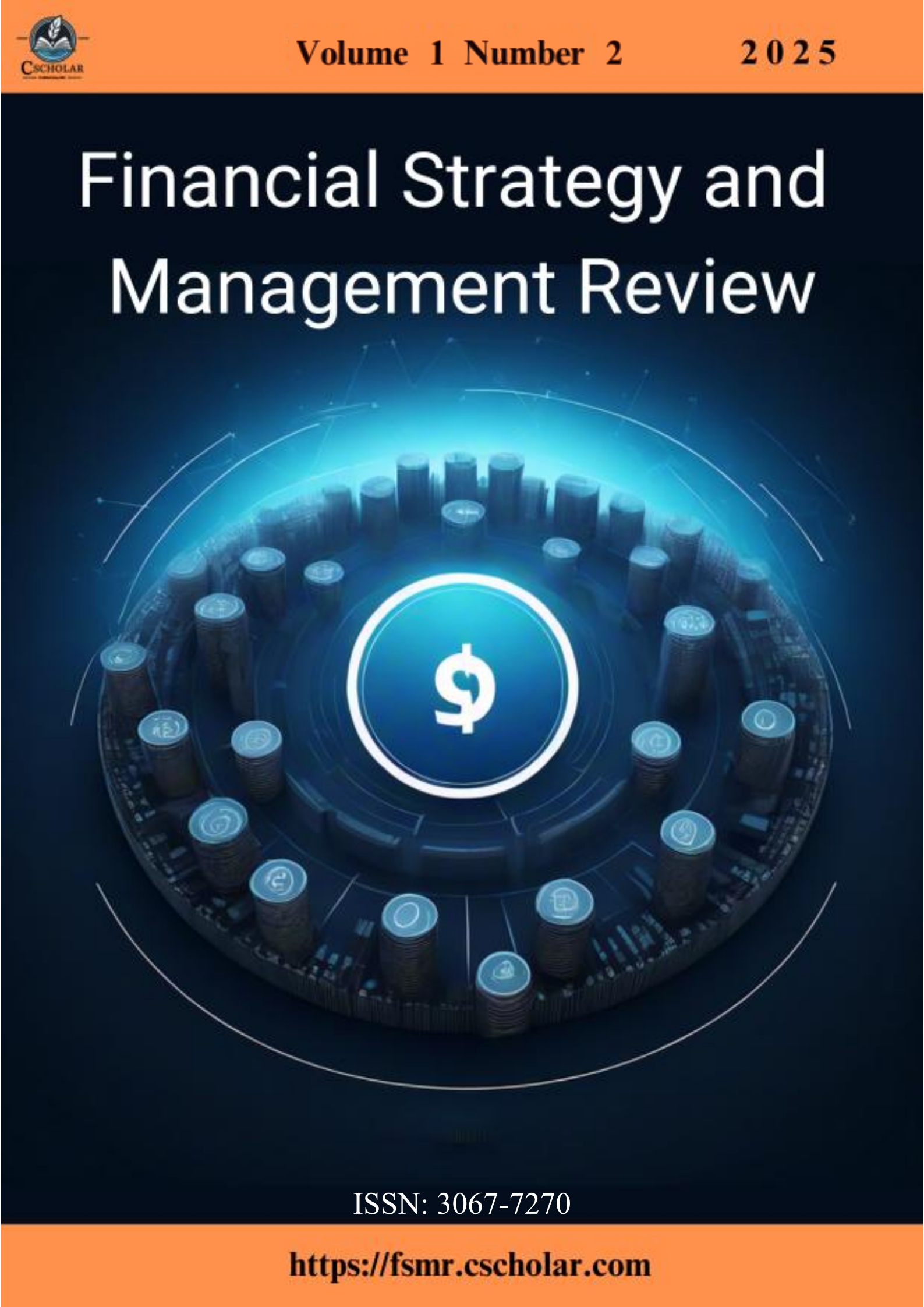Optimizing Precision in Volatile Crypto Markets with E²-Fuse: An Energy-Based Ensemble for Bitcoin Forecasting
DOI:
https://doi.org/10.71204/f1dbs667Keywords:
Bitcoin Price Prediction, Ensemble Learning, Machine Learning, Energy Minimization, Gradient-Based Optimization, Financial ForecastingAbstract
Bitcoin (BTC) has become a major financial asset, attracting significant attention from both institutional and individual investors. However, its extreme price volatility—driven by macroeconomic factors, regulatory changes, and investor sentiment—makes accurate forecasting challenging, as traditional models and machine learning approaches struggle to effectively capture its complex dynamics. Addressing these limitations, we introduce E²-Fuse, a novel energy-minimizing ensemble framework specifically designed for Bitcoin price prediction. E²-Fuse conceptualizes each base model’s mean squared error (MSE) as individual “energy” components and employs gradient-based optimization techniques to minimize the total system energy, thereby enhancing predictive accuracy. This physics-inspired methodology systematically integrates multiple advanced ML predictors, ensuring that the ensemble adapts dynamically to BTC’s volatile market conditions. Our empirical evaluations demonstrate that E²-Fuse achieves a Normalized RMSE (Accuracy Score) of 0.9969, indicating near-perfect prediction accuracy, and consistently outperforms single models and traditional ensemble methods by achieving lower prediction errors and enhanced robustness against market fluctuations. The framework’s model-agnostic nature allows for seamless incorporation of diverse algorithms, including neural networks and gradient boosting methods, broadening its applicability across various high-volatility domains beyond finance. By formalizing ensemble weight determination through energy minimization, E²-Fuse not only advances the state-of-the-art in BTC forecasting but also offers a versatile and theoretically grounded approach for optimizing predictive performance in complex, dynamic environments. This study underscores the potential of integrating advanced ML techniques within an optimization-driven ensemble framework, paving the way for more reliable and adaptive financial forecasting models.
References
Amini, S., Schryver, T., & Clark, J. (2019). Ensemble methods in financial time series forecasting. Quantitative Finance, 19(4), 567-584.
Boyd, S., & Vandenberghe, L. (2004). Convex Optimization. Cambridge University Press.
Breiman, L. (2001). Random forests. Machine Learning, 45(1), 5-32.
Cheah, E. T., & Fry, J. (2015). Speculative bubbles in Bitcoin markets? An empirical investigation into the fundamental value of Bitcoin. Economics Letters, 130, 32-36.
Dietterich, T. G. (2000). Ensemble methods in machine learning. In International workshop on multiple classifier systems (pp. 1-15). Berlin, Heidelberg: Springer Berlin Heidelberg.
Fletcher, R. (1987). Practical Methods of Optimization. Wiley.
Friedman, J., Hastie, T., & Tibshirani, R. (2001). The Elements of Statistical Learning: Data Mining, Inference, and Prediction. Springer.
Goodfellow, I., Bengio, Y., & Courville, A. (2016). Deep Learning. MIT Press.
Ke, G., Meng, Q., Finley, T., Wang, T., Chen, W., Ma, W., Ye, Q., & Liu, T. Y. (2017). LightGBM: A highly efficient gradient boosting decision tree. Advances in Neural Information Processing Systems, 30.
Kristoufek, L. (2015). What are the main drivers of the Bitcoin price? Evidence from wavelet coherence analysis. PloS One, 10(4), e0123923.
Kuncheva, L. I. (2004). Combining Pattern Classifiers: Methods and Algorithms. Wiley.
Liang, Y., Chen, C., Tian, T., & Shu, K. (2023). Fair classification via domain adaptation: A dual adversarial learning approach. Frontiers in Big Data, 5, 129.
Lorenz, E. N. (1963). Deterministic nonperiodic flow. Journal of the Atmospheric Sciences, 20(2), 130-141.
Ngai, E. W. T., Hu, Y., Wong, Y. H., Chen, Y., & Sun, X. (2011). The application of data mining techniques in financial fraud detection: A classification framework and an academic review of literature. Decision Support Systems, 50(3), 559-569.
Nocedal, J., & Wright, S. J. (2006). Numerical Optimization. Springer.
Opitz, D., & Maclin, R. (1999). Popular ensemble methods: An empirical study. Journal of Artificial Intelligence Research, 11, 169-198.
Polikar, R. (2006). Ensemble learning. Scholarpedia, 2(1), 2776.
Rokach, L. (2010). Ensemble-based classifiers. Artificial Intelligence Review, 33(1), 1-39.
Schmidhuber, J. (2015). Deep learning in neural networks: An overview. Neural Networks, 61, 85-117.
Shen, D., Urquhart, A., & Wang, P. (2020). Does Twitter predict Bitcoin? Economics Letters, 191, 108722.
Tian, T. (2024). Integrating deep learning and innovative feature selection for improved short-term price prediction in futures markets (Doctoral dissertation, Illinois Institute of Technology).
Tian, T., Chen, X., Liu, Z., Huang, Z., & Tang, Y. (2024). Enhancing organizational performance: Harnessing AI and NLP for user feedback analysis in product development. Innovations in Applied Engineering and Technology, 3(1), 1–15.
Tian, T., Cooper, R., Vasilakos, A., Deng, J., & Zhang, Q. (2026). From data to strategy: A public market framework for competitive intelligence. Expert Systems with Applications, 296, 129061.
Tian, T., Deng, J., Zheng, B., Wan, X., & Lin, J. (2024). AI-driven transformation: Revolutionizing production management with machine learning and data visualization. Journal of Computational Methods in Engineering Applications, 4(1), 1–18.
Tian, T., Fang, S., Huang, Z., & Wan, X. (2024). TriFusion ensemble model: A physical systems approach to enhancing e-commerce predictive analytics with an interpretable hybrid ensemble using SHAP explainable AI. Economic Management & Global Business Studies, 3(1), 15.
Tian, T., Jia, S., Lin, J., Huang, Z., Wang, K. O., & Tang, Y. (2024). Enhancing industrial management through AI integration: A comprehensive review of risk assessment, machine learning applications, and data-driven strategies. Economics & Management Information, 3(4), 1–18.
Tibshirani, R. (1996). Regression shrinkage and selection via the Lasso. Journal of the Royal Statistical Society: Series B (Methodological), 58(1), 267-288.
Tsay, R. S. (2005). Analysis of Financial Time Series. Wiley-Interscience.
Vapnik, V. (1995). The Nature of Statistical Learning Theory. Springer.
Zhou, Z. H. (2012). Ensemble Methods: Foundations and Algorithms. CRC Press.
Downloads
Published
Issue
Section
License
Copyright (c) 2025 Sai Zhang, Yeran Lu, Chongbin Luo, Qifan Wei, Xunyi Liu, Yiyun Zheng (Author)

This work is licensed under a Creative Commons Attribution 4.0 International License.
All articles published in this journal are licensed under the Creative Commons Attribution 4.0 International License (CC BY 4.0). This license permits unrestricted use, distribution, and reproduction in any medium, provided the original author(s) and source are properly credited. Authors retain copyright of their work, and readers are free to copy, share, adapt, and build upon the material for any purpose, including commercial use, as long as appropriate attribution is given.





